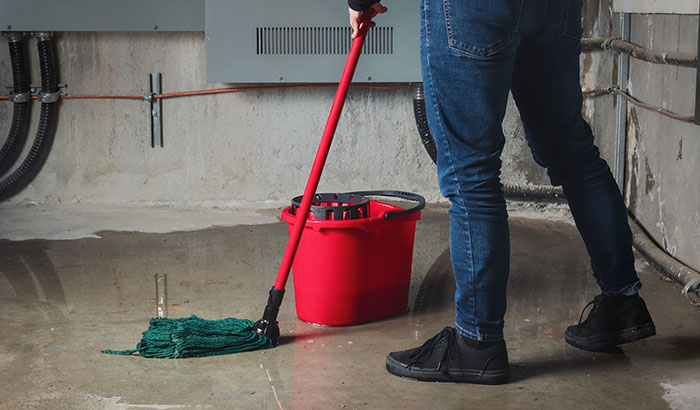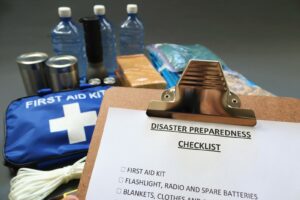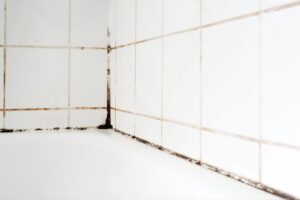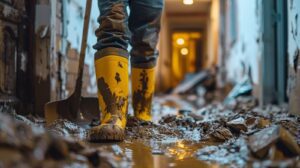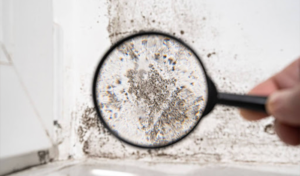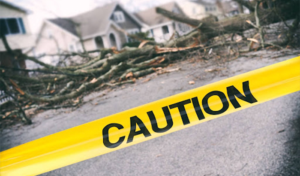Has your home fallen victim to sewage damage? Several signs will help you identify if you have sewage damage if you are unsure. This article will give tips on determining if your home has been damaged by sewage and what to do next.
Odor
The sense of smell is a powerful tool in identifying sewage damage in a home. A strong, persistent sewage odor is a clear sign of sewage damage in the area. This odor is distinct and can be described as a mixture of pungent and unpleasant smells, including rotten eggs, raw sewage, and mustiness.
How to identify sewage damage through your sense of smell:
- Locate the source of the odor – The first step is determining where the sewage odor originates. This could be from a specific room, area, or pipe in the home.
- Isolate the odor – Once you have located the source of the smell, isolate the area by closing doors and windows. This will help you determine the odor’s strength and if it is concentrated in one location.
- Investigate the odor – If the smell is strong, it is important to investigate the source to determine if it is sewage damage. Check for any visible signs of damage, such as brown or yellow stains on walls, floors, ceilings, or water damage in the area.
- Check the pipes – If the source of the odor is not immediately apparent, check the pipes for any signs of damage or leaks. Water damage, visible cracks, or moisture buildup around the pipes could indicate this.
- Seek professional help – If you cannot determine the source of the odor or if the smell is persistent, it is important to seek professional assistance. A professional will be able to identify the source of the odor and determine if there is sewage damage in your home.
Discoloration
Discoloration is another way to identify sewage damage in a home. For example, brown or yellow stains on walls, floors, and ceilings can indicate sewage damage in the area.
Here are the steps to identify sewage damage by color:
- Check for visible stains – Look for brown or yellow stains on walls, floors, and ceilings. Pay close attention to areas near pipes, sinks, and toilets, as these are common locations for sewage damage.
- Inspect the affected area – If you have located a stain, inspect the area carefully. Check for any signs of water damage, such as discoloration, peeling paint, or moisture buildup.
- Check for additional discoloration – Look for additional discoloration in other areas of the room, such as near the pipes or on the ceiling.
- Compare with other areas – Compare the discoloration to other areas of the room or home to determine if it is different or unusual.
- Seek professional help – If you cannot determine the cause of the discoloration or if it is persistent, it is important to seek professional assistance. A professional can identify the cause of the discoloration and determine if there is sewage damage in your home.
Water Damage
Water damage and dampness in areas near the sewage pipes may indicate a sewage backup.
Here are the steps to identify sewage damage by visibility:
- Look for water damage – Check for visible water damage, such as dampness, water stains, or swelling in areas near sewage pipes, sinks, toilets, and other fixtures.
- Check for mold growth – Look for any visible mold growth, often indicated by discoloration, a musty odor, or visible growth on surfaces.
- Inspect pipes and fixtures – Check pipes and fixtures for any signs of damage, such as cracks, leaks, or corrosion.
- Look for moisture buildup – Check for moisture buildup around pipes, fixtures, and other areas in the home. Moisture buildup can indicate a sewage backup or other issues.
- Seek professional help – If you cannot determine the cause of the water damage or if it is persistent, it is important to seek professional assistance. A professional will be able to identify the cause of the water damage and determine if there is sewage damage in your home.
Health Symptoms
Health symptoms can also indicate sewage damage in a home. For example, exposure to sewage can cause respiratory and skin irritation, as well as other health problems.
Here are the steps to identify sewage damage by health symptoms:
- Observe physical symptoms – Skin irritation, redness, itching, rashes, and eye irritation. These symptoms may be a result of exposure to contaminated water or air.
- Note respiratory symptoms – Coughing, wheezing, shortness of breath, and chest tightness may be a result of inhaling contaminated air.
- Keep track of symptoms – Keep track of the symptoms and when they occur. This information may be useful when seeking medical treatment or discussing the issue with a professional.
- Seek medical treatment – It is important to seek medical treatment. Your doctor may recommend treatment, such as allergy medicine or a referral to a specialist.
- Seek professional help – If you suspect sewage damage and are experiencing health symptoms, it is important to seek professional assistance. A professional can identify the source of the symptoms and determine if there is sewage damage in your home.
Contact with Raw Sewage Health Effects
Several serious health problems may be caused by contact with raw sewage, including:
- Gastrointestinal illnesses – Raw sewage contains harmful bacteria and viruses that can cause diarrhea, nausea, vomiting, and other gastrointestinal problems.
- Skin infections – The bacteria and parasites in raw sewage can cause skin infections, such as impetigo and cellulitis.
- Respiratory illnesses – Inhaling contaminated air can cause respiratory diseases like bronchitis and pneumonia.
- Hepatitis A – This is a viral liver disease that can be transmitted through contaminated water or food.
- Weil’s disease – Also known as Leptospirosis, this is a bacterial infection that can be contracted through contact with contaminated water.
- Toxoplasmosis – This parasitic infection can be contracted through contact with contaminated soil or water.
Hire a Professional
Here are five reasons why you should leave your sewage damage clean up and water damage restoration to a professional:
- Health and Safety – A professional will have the necessary equipment, such as gloves and masks, to safely clean up the damage and prevent exposure to contaminated materials.
- Proper Disposal – A professional can safely remove and dispose of contaminated materials.
- Thorough Cleaning – A professional can thoroughly clean and decontaminate the affected areas.
- Restoration – A professional will be able to restore the affected areas to their original condition, repairing any damage caused by the sewage backup and ensuring that the home is safe and habitable.
- Experience and Expertise – A professional has experience and expertise in cleaning up sewage damage and will be able to identify and address any underlying causes of the damage, such as clogged pipes or faulty plumbing.
Total Flood & Fire Restoration understands how daunting it can be to clean up sewage damage. However, we have the knowledge and experience to clean up the damage in your home and restore it to its original condition. Contact us today, and we’ll have your home sewage and water damage free in no time.

